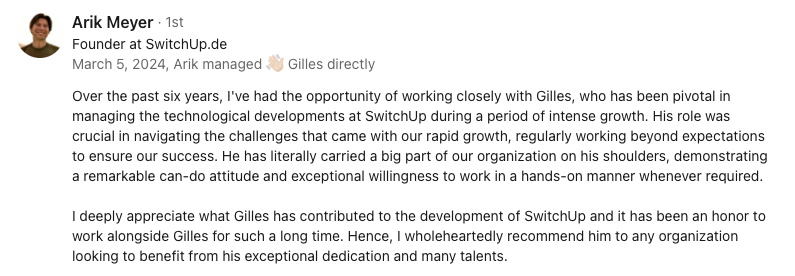Abstract:
Robotic Process Automation (RPA) stands as a transformative force in streamlining business processes, enhancing efficiency, and reducing operational costs. By automating repetitive tasks, organizations can reallocate their human resources to more strategic initiatives, driving innovation and growth. The implementation of RPA tools not only accelerates workflow processes but also minimizes errors, ensuring higher accuracy and reliability in data handling. This shift towards automation allows businesses to offer better customer experiences through quicker service delivery and response times. Moreover, RPA's scalability makes it a versatile solution across various industries, providing a competitive edge in today's fast-paced market. This article explores the fundamentals of RPA, its advantages for business operations, and practical steps for successful implementation, offering directors of technology and engineering insights into harnessing the potential of RPA to achieve operational excellence.
Understanding RPA and Its Impact on Workflows
Robotic Process Automation (RPA) is reshaping how businesses operate by enabling the automation of tedious and repetitive tasks. By leveraging software robots or "bots," companies can significantly enhance efficiency and transform their workflows. These bots can mimic human actions—such as data entry, transactions, and responding to queries—ensuring tasks are completed with precision and speed.
RPA brings substantial benefits to business operations. It frees up human employees to focus on more strategic activities, rather than mundane tasks, thus maximizing productivity. By automating processes, companies can also expect a reduction in operational costs, leading to a more streamlined workflow. Essentially, RPA is a game-changer for businesses looking to optimize their processes and stay competitive.
Efficiency gains and cost reduction through RPA
One of the most striking benefits of Robotic Process Automation (RPA) is how it revolutionizes efficiency and reduces costs. By automating repetitive and time-consuming tasks, organizations can significantly streamline their operations. This shift allows human employees to move away from monotonous activities and focus on more creative and strategic endeavors.
Imagine an employee who spends hours each week on data entry or invoice processing. With RPA, these tedious tasks can be executed swiftly and accurately by bots. This automation not only speeds up the process but also drastically reduces the likelihood of human errors, which can be costly.
Furthermore, implementing RPA translates to tangible financial savings. Companies can cut down on overhead costs associated with manual labor. This financial flexibility allows organizations to allocate their resources towards innovation and growth-driving initiatives. The reduction in operational costs, coupled with enhanced productivity, gives companies a competitive edge in their respective industries.
In summary, RPA offers a dual advantage: it boosts efficiency by automating routine tasks and reduces costs, all while allowing human talent to pivot towards value-added activities. This creates a work environment where innovation thrives and business processes are seamlessly optimized.
Accuracy and reliability in data handling
Robotic Process Automation (RPA) significantly enhances the accuracy and reliability of data handling in business processes. By automating repetitive and data-intensive activities, RPA minimizes human errors, ensuring that tasks are performed consistently and precisely. This is crucial for maintaining high standards and trustworthiness in business operations.
The precision brought by RPA is particularly beneficial for data-driven decision-making. Reliable data free from errors ensures that business leaders can make informed choices based on a solid foundation. In turn, this leads to better strategic planning and execution.
Consider the importance of accurate data when generating financial reports or managing customer records. Mistakes in these areas can lead to incorrect financial forecasts or poor customer experiences. By leveraging RPA, companies can avoid these pitfalls, maintaining integrity and reliability in critical business functions.
In essence, RPA not only streamlines workflows but also fortifies the accuracy and dependability of data handling, which is essential for any organization aiming for excellence and growth.
Improved customer experiences
Robotic Process Automation (RPA) plays a substantial role in transforming customer service by enabling quicker service delivery and better response times. Automation empowers businesses to offer more efficient customer support, thereby elevating customer satisfaction and loyalty.
One of the most noticeable benefits of RPA in customer relations is the ability to address inquiries and resolve issues promptly. Bots can handle customer requests around the clock, ensuring queries are responded to immediately instead of waiting in a queue. This rapid response capability significantly enhances the overall customer experience, fostering a positive impression of the company.
Additionally, by automating routine tasks such as order processing, account management, and frequently asked questions, staff members can dedicate more time to handling complex issues requiring human intervention. This targeted approach ensures that customers receive high-quality service, with the right balance between automated efficiency and personalized support.
The benefits of RPA also extend to improving accuracy in customer data management. Automation ensures that customer records are up-to-date and error-free, which is critical for personalized communication and effective service delivery. This precise data handling helps build trust and reliability, ultimately leading to lasting customer relationships.
In summary, RPA significantly enhances customer experiences by providing rapid, accurate, and efficient service. By shifting routine tasks away from human employees, businesses can ensure a more responsive and satisfactory service, creating loyal customers who are more likely to return and recommend the brand to others.
Scalability of RPA across industries
Robotic Process Automation (RPA) boasts impressive scalability and versatility, making it a valuable tool across various industries. Whether it's finance, healthcare, manufacturing, retail, or customer service, RPA adapts seamlessly to unique business environments and diverse operational needs.
In the fast-paced business world, scalability is key. RPA provides a competitive edge by accommodating growing workloads without the need for proportionally increasing manual labor. Here's how:
- Finance: Automate transaction processing, compliance checks, and reporting, reducing errors and speeding up operations.
- Healthcare: Streamline patient data management, appointment scheduling, and billing, enhancing service delivery and accuracy.
- Manufacturing: Optimize inventory management, supply chain operations, and quality control processes, ensuring efficiency and precision.
- Retail: Automate customer support, order processing, and inventory tracking, improving customer satisfaction and operational efficiency.
This adaptability enables businesses to quickly scale operations in response to market demands, improving their ability to stay competitive and responsive. By integrating RPA, organizations can achieve consistent quality and enhanced productivity, paving the way for sustainable growth.
Practical steps for implementing RPA
Successfully implementing Robotic Process Automation (RPA) involves a strategic approach and a clear roadmap. Here are some practical steps to guide directors of technology and engineering in harnessing RPA to achieve operational excellence:
1. Strategic planning
Begin by identifying the specific processes and tasks that would benefit the most from automation. Focus on repetitive, high-volume activities where RPA can make the most significant impact. Engage stakeholders from different departments to gather their input and ensure alignment with overall business objectives.
2. Choose the right RPA tools
Selecting the appropriate RPA tool is crucial. Evaluate different RPA platforms based on their features, ease of use, scalability, and cost. Ensure that the chosen tool can integrate seamlessly with your existing systems and technologies. Consider seeking feedback from other companies or experts who have successfully implemented RPA to get insights into their experiences.
3. Develop a robust implementation plan
Create a detailed implementation plan outlining the steps, timelines, and resources required. Include a pilot phase to test the RPA solution on a smaller scale before rolling it out across the organization. This helps in identifying any potential challenges and making necessary adjustments.
4. Follow best practices
Adhere to industry best practices to ensure a smooth implementation process. This includes:
- Documentation: Thoroughly document all processes and workflows to be automated.
- Change management: Communicate the benefits of RPA to all employees and address any concerns to facilitate a smooth transition.
- Training: Provide comprehensive training to staff to effectively use and manage the RPA tools.
- Monitoring and optimization: Continuously monitor the performance of deployed bots and make iterative improvements as needed.
5. Measure and analyze results
After implementation, measure the impact of RPA on your processes. Track metrics such as time saved, error reduction, and cost savings to evaluate the success of the automation. Use this data to identify areas for further optimization and to demonstrate the value of RPA to stakeholders.
By following these practical steps, directors of technology and engineering can effectively implement RPA, driving efficiency, accuracy, and cost savings across their organizations. This strategic approach not only enhances workflows but also positions the company for sustained growth and innovation.
Final thoughts and future potential of RPA
Throughout our exploration of Robotic Process Automation (RPA), we have seen its powerful impact on streamlining workflows and enhancing business efficiency. By automating repetitive and mundane tasks, RPA allows human talent to focus on more strategic and creative endeavors, driving productivity and innovation. The benefits are multifaceted, spanning from significant cost reductions to impeccable accuracy in data handling and improved customer service.
RPA's ability to scale across various industries further showcases its versatility and potential. Whether in finance, healthcare, manufacturing, or retail, the adoption of RPA can lead to consistent quality and operational excellence, positioning businesses to thrive in a competitive landscape.
Looking forward, it is clear that RPA will continue to play a crucial role in transforming business operations. Enterprises that embrace this technology can look forward to maintaining a robust competitive advantage, ensuring sustained growth and success in the market. Embracing RPA is not just about staying current; it's about paving the way for future excellence and innovation.
You might be interested by these articles:
- Robotic Process Automation Implementation
- Maximizing Efficiency with RPA
- Boosting Customer Satisfaction with RPA in European Startups





